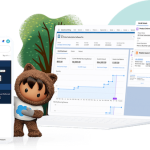Over the last two years, many brands accelerated digital transformation to meet customers online. Customers quickly embraced the speed, convenience, and safety of digital experiences. However, digital alone is no longer enough.
“Consumers are now excited to go back into stores and are craving human experiences,” explains Anne Wang, Account Director, Service Cloud, ASEAN at Salesforce. “A hybrid of digital and in-person experiences has become the new norm.”
This is driving a strong desire for connected, seamless customer service. Brands that utilise the speed, convenience, and safety of digital while humanising customer experiences will be well placed to meet this desire.
Redefining customer care in the post-pandemic era
A new level of customer obsession is needed to fulfil this craving for human connection.
Wang believes the typical post-pandemic customer wants to be treated as a VIP. To do so requires seamless, connected customer experiences across all channels.
“Customers want to be recognised as an important person, not a case ID,” she says. “They want us to know them regardless of the channel they contact us from.”
“For example, when customers go to a bank now, they expect the service of a five-star hotel,” adds Jazlan Azizy Jusoh, Head of Business Services, TM ONE at Telekom Malaysia. “The bar has been raised.”
He says brands can fulfil this new expectation by creating a coherent digital experience.
“This requires rapid research to understand new pain points, and agile innovation to address them. Organisations that master this approach will create value for consumers in high-priority areas.”
Redesigning customer journeys for the new context
Redesigning customer journeys for the post-pandemic context will help brands to deliver this level of customer obsession. Jazlan says this begins with adopting more customer-centric processes.
“Thinking from the customer’s perspective is key. We must focus on what matters more to customers, instead of just what matters to us,” he says. “Put the customer at the centre, and design the right data architecture around the customer to build a 360-degree view.”
This 360-degree customer view provides all the data brands need to understand the needs and behaviour of each customer. Such knowledge can be used to design new operational processes that directly address customer needs and behaviours.
Brands can then map customer journeys and touch points to these new internal processes. This is how organisations use customer journey mapping to stay focused on customer needs and develop empathy with customers.
Humanising customer experience
Customers are craving human connection, and personalisation can help brands deliver it. Personalising customer touch points deepens engagement. Customers feel seen, heard, and understood. This creates loyalty.
However, Jazlan says many brands are failing to deliver this level of personalisation with coherent digital experiences.
“Connecting with and satisfying customers have become more complex with the proliferation of digital channels,” he explains. “Maintaining a strong customer experience requires agile innovation to address changing dynamics and new pain points.”
Jazlan’s advice is to use end-to-end technologies to build capabilities that focus on people and process.
“For example, Salesforce Service Cloud is able to leverage artificial intelligence (AI) and data to empower contact centre agents to create more empathetic experiences, and give customers the human touch,” says Wang. “Service Cloud Voice can pull out key information such as the customer’s preference, past purchases, engagement history, and use AI to recommend the next best action in a live chat environment.”
Personalisation isn’t just about AI. Aureus Academy is a leading Singapore music school with more than 15,000 students enrolled. It provides an excellent example of how companies can design simple processes around individual customer preferences.
Julius Holmefjord-Sarabi, Chief Technology and Financial Officer at Aureus Group explains how his company is planning to put technology-assisted personalisation to use.
“When a student signs up for a trial, we can ask for their favourite song. Their teacher could then prepare an arrangement of that song, so during the trial the student is excited and engaged. This would help achieve our key priority to keep every customer engaged with their lessons.”
Connecting customer experience with end-to-end technologies
Technology is the key to helping brands create seamless, connected customer experiences. Jazlan highlights the importance of integrating back-end and front-end platforms to avoid data silos.
“Think about end-to-end technologies, not just frontliners. Frontliners depend on people at the back-end who are doing the support work. The technologies and platforms used on both ends need to be connected so the front-end and back-end teams can effectively work together,” he says.
Aureus Academy is achieving this kind of integration with its popular customer app and portal. Julius says more than 15,000 lessons are booked, rescheduled, or cancelled each month within the app.
“All of this data syncs in real-time across all of our channels and agents,” he explains. “Customers can choose to contact us in whichever format they prefer — via email, phone, website chat, or Facebook. We are able to address their requests in the same way across all of these channels.”
Technology turns customers into VIPs
The post-pandemic era is an exciting time for companies with the courage to innovate.
“The barriers of trying a lot of these technologies are lower than before, and the payoff if you get it right has probably never been higher,” says Wang. “So I think it’s the time to try ideas and keep testing.”
Jazlan agrees: “We need to be able to fail fast and fail forward so we can continue to learn and innovate.”
The key to this innovation will be leveraging technology and data to achieve new levels of personalisation that humanise customer experiences. This is the secret to delivering seamless and connected service that will make your customers feel like VIPs.
To learn more about creating connected customer experiences, download our The Secret to Seamless Service: Connected Channels ebook.
























